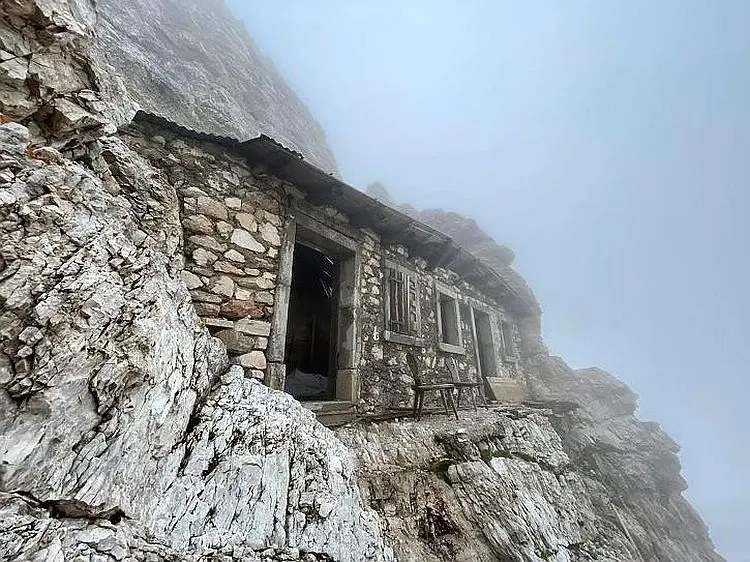Perched high in the Dolomite Mountains of Italy, clinging to a rocky ledge, is a solitary, remote house called “Buffa di Perrero.”
A Hidden Gem of the Dolomites
Nestled in the rugged terrain of the Dolomites, this secluded structure blends almost seamlessly into the surrounding brownish mountain rock. Dubbed “the loneliest house in the world,” its front door overlooks a dizzying height of nearly 2,800 meters, a setting that would likely unsettle most people.

Built on the edge of the mountain in a nearly inaccessible location, Buffa di Perrero has intrigued mountaineers and adventurers for over a century. The house, over 100 years old, radiates an air of mystery and eerie desolation.
An Unlikely Construction Site
Buffa di Perrero is a strange, solitary structure built into the rock face of the Dolomites. Its impractical location is perhaps its most fascinating aspect. Over a century ago, reaching this high-altitude, remote spot was only possible by using rope ladders and makeshift cable systems to transport construction materials.

Even today, the path to the house is treacherous and challenging. Only the most skilled and experienced climbers dare tackle the Via Ferrata Ivano Dibona, a “iron road” equipped with cables, ladders, and steel rungs to help climbers navigate the perilous terrain and reach the house.
Inside the Lonely House
The house itself is simple, with no extravagant architectural features. Its straightforward design suggests it served a basic purpose: a place to rest. Its brick walls, sloped roof, and wooden-paneled interior include a narrow room with a few scattered white wooden chairs, hinting at past human presence.

A Historical Haven During World War I
Historians believe the house was built as a rest station for Italian soldiers during World War I, who fought the Austro-Hungarian forces in the Dolomites’ harsh and unforgiving terrain. The structure likely served as a refuge for storing supplies, weapons, and food, offering soldiers a strategic hideout.
The house is named after Alpini Colonel Carlo Buffa di Perrero, a war hero and mountain enthusiast who died on the frontlines from an enemy grenade. While the house’s roof was destroyed in a snowstorm, it has recently undergone restoration to honor its namesake and historical significance.

A Destination for the Bold
Today, Buffa di Perrero is accessible only via makeshift cable cars or treacherous mountain paths, making it a haven for adventurous climbers. Guided tours now allow visitors to explore the site, though reaching it is no small feat.
The Club Alpino Italiano (CAI), responsible for maintaining regional hiking trails, was inspired by this unique house to build a modern refuge nearby. Located near the Forcella Marmarole Pass, the new shelter can accommodate up to 12 people, providing an updated destination for adventurers.

A Testament to Human Ingenuity
Buffa di Perrero is a remarkable and unique structure, demonstrating human creativity and resilience. If you’re a fan of adventure travel, visiting this extraordinary place will surely provide a sense of fulfillment and awe.






